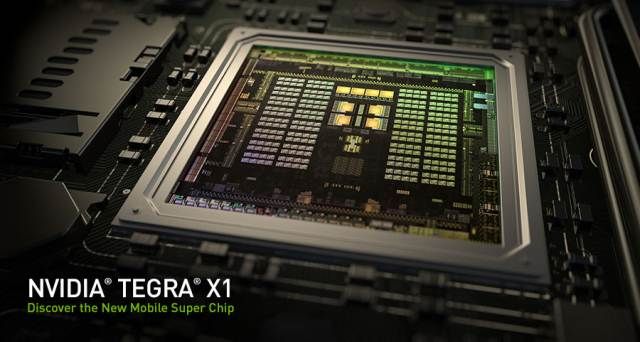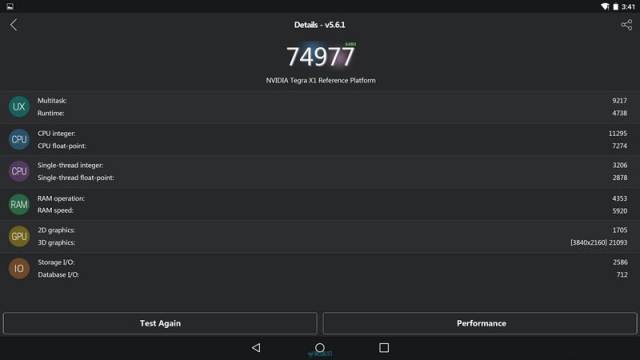Unveiled at the beginning of January, the NVIDIA Tegra X1 just point out to the edge of a reference platform tested AnTuTu. The opportunity to get a first idea of the performance of the latest NVIDIA chip. And we are not disappointed!
This year, NVIDIA took advantage of CES in Las Vegas to introduce its new chip to do anything, the Tegra X1, so it should not equip commercial platforms before the second half. Fortunately we will not have to wait that long to find out what she has in the stomach. AnTuTu recently delivered a first look after the passage of a reference platform. The report is available in a screenshot relayed on MyDrivers and you will find below.
New record to beat!
75,000 points, so the score obtained by the Tegra X1. The best ever recorded by the benchmark. We find behind the Qualcomm Snapdragon 810 61 700 points closely followed by Samsung’s Exynos 7420 with just under 61,000 points. Note however that the chip nVidia should equip as tablets and that we do not know the technical characteristics of the reference platform, which is probably better optimized than any business platform in all cases.
Nevertheless, it’s a nice introduction. Especially since NVIDIA has this time merely ARM architectures rather than developing its own like the 64-bit version of the Tegra K1 (Denver). It goes well with the combination of Cortex-A53 and Cortex-A57 on an octa-core ARM big.LITTLE configuration to ensure the support of 64-bit, as found on the other two above mentioned chipsets. The big difference is the GPU, resulting from the generation and Maxwell with 256 cores.
Twice as good as the Tegra K1 on the graphics
NVIDIA promised performance doubled the graphics. It has clearly not lied since the Tegra X1 gets a score of 21,000 points in this area. His predecessor stagnated between 10 000 and 11 000 points. This is partly what explains the difference with the Qualcomm Snapdragon 810, but not exceeding the Exynos, too, the 20 000 points to test 3D with its Mali-T760.
It is truly the CPU side that the gap is widening between Samsung and Nvidia. We suspect while the low frequency of the Exynos (2.1 GHz at the last test) to be the cause. Recall that the Tegra X1 has not been specified. And this seems to be confirmed with the chip from Qualcomm, who catches a little up on the application part and whose hearts are just faster (up to 2.8GHz rumored).
Good performances confirm aboard commercial platforms
Obviously, optimization also has its share in all that is and NVIDIA is obviously well out but, again, not the characteristics of the reference platform, impossible to draw conclusions. We may learn a little more next month. It is rumored that a new SHIELD tablet, under Tegra X1, will be made official on 3 March.


